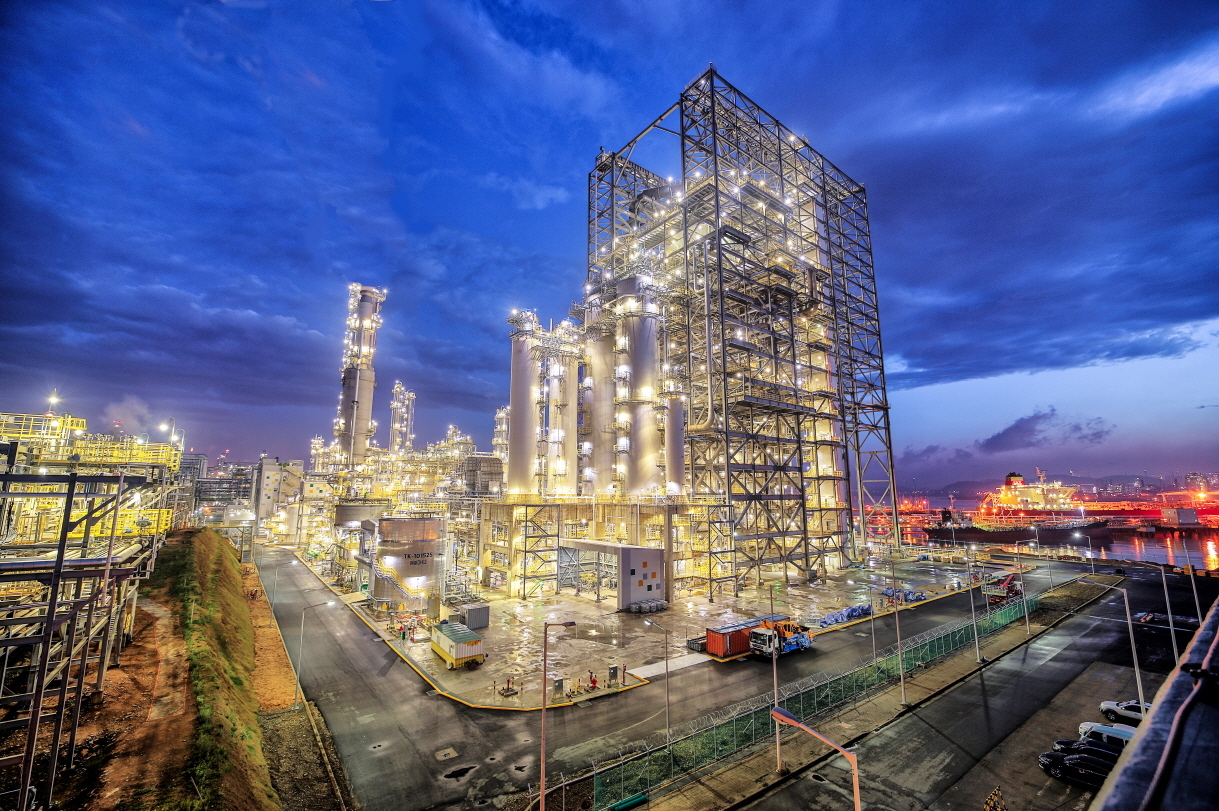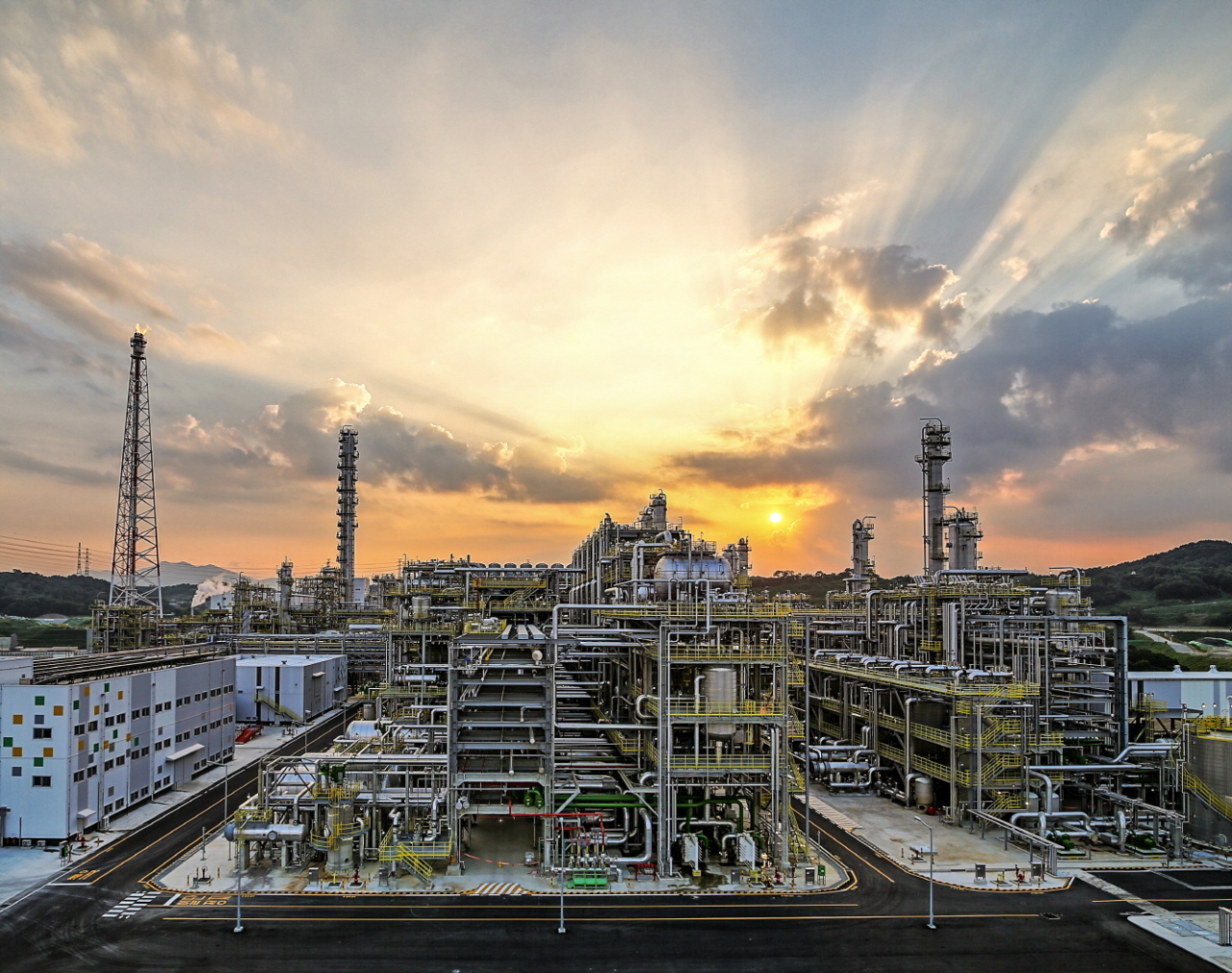S-Oil broadens horizons with preeminent chemicals projects
Oil refiner’s RUC/ODC project represents firms’ wider versability to IT, biotechnology
By Shin Ji-hyePublished : June 26, 2019 - 09:00
South Korea’s leading oil refiner S-Oil is getting closer to its “Vision 2025,” in which it aspires to become the most competitive and admired energy and chemical company in the Asia-Pacific region.
It is swiftly responding to rapid changes in the business environment brought on by the shale boom and emergence of electric vehicles.
S-Oil, founded in 1976, has delivered phenomenal growth since Saudi Aramco’s investment in 1991 as the largest shareholder. Its crude refining capacity has since jumped from 90,000 barrels to 669,000 barrels per day. Its business portfolio has newly added the petrochemical business with aromatics and olefin as a new growth engine.
S-Oil is now gearing up for petrochemical downstream business, setting aside funds of more than 12 trillion won ($10.4 billion).
It spent 5 trillion won for building a residue upgrading complex and olefin downstream complex, or RUC and ODC, which started commercial operations in November last year. The firm is looking at investing more funds that may even exceed the previous figure, in a phase two petrochemicals project to build a 1,500 kiloton-per-year steam cracker and olefin downstream facilities.
It is swiftly responding to rapid changes in the business environment brought on by the shale boom and emergence of electric vehicles.
S-Oil, founded in 1976, has delivered phenomenal growth since Saudi Aramco’s investment in 1991 as the largest shareholder. Its crude refining capacity has since jumped from 90,000 barrels to 669,000 barrels per day. Its business portfolio has newly added the petrochemical business with aromatics and olefin as a new growth engine.
S-Oil is now gearing up for petrochemical downstream business, setting aside funds of more than 12 trillion won ($10.4 billion).
It spent 5 trillion won for building a residue upgrading complex and olefin downstream complex, or RUC and ODC, which started commercial operations in November last year. The firm is looking at investing more funds that may even exceed the previous figure, in a phase two petrochemicals project to build a 1,500 kiloton-per-year steam cracker and olefin downstream facilities.

As the mega-scale project began operations in November, the company said the portion of its high-value petrochemical products increased from 8 percent to 13 percent, while that of heavy fuel, which is cheaper than crude oil, is down from 12 percent to 4 percent. The petrochemical portfolio has become more balanced, with the paraxylene portion down from 71 percent to 46 percent.
This change puts the company in a better position to respond to the International Maritime Organization’s new sulfur regulations on marine fuel from 2020, the company said.
The RUC/ODC project does not merely represent the expansion of facilities but the oil refiner’s foray into uncharted territory, such as olefin downstream already high in demand in automobile and electronic products, and its move to broaden its versatility to information technology, biotechnology and other high-value businesses.
The new facilities -- the largest in the company’s history -- are in full swing and S-Oil expects a phenomenal boost in profitability.
“The new facilities are far more capable of producing propylene, which is a basic petrochemical, than the conventional heavy fuel cracking facilities. High-severity fluid catalytic cracking that we built to keep abreast of changes in the business environment will allow us to enjoy higher profitability and stable operations” said S-Oil.
The new residue upgrading complex plays an additional role in supplying propylene, which is the petrochemical feedstock, for producing 405,000 metric tons per year of polypropylene and 300,000 metric tons per year of propylene-oxide, according to the company.

Seventy percent of its polypropylene will be exported. Polypropylene is a petrochemical product widely used in making disposable syringes, transparent containers, sanitary nonwoven fabrics, wrapping film, thermos bottles, medical instruments and medicinal containers. It is more resistant to degradation by chemicals and water compared to other plastics. Its solid and high-impact polypropylene goes into automobile parts, household goods and industrial materials.
In a follow-up to the RUC/ODC project, S-Oil is deliberating on the construction of a 1,500 kiloton-per-year cracker plant as part of a phase two petrochemical project with another huge investment.
The use of naphtha and refinery off-gas as a feedstock to produce ethylene and other basic petrochemicals is believed to give the company an advantage in feedstock sourcing and cost competitiveness. The project also includes olefin downstream facilities to enhance its production capacity of high-value petrochemical products.
“The phase two petrochemical project will be the company’s new growth engine after the RUC/ODC project. We expect to further strengthen the foundation for sustainable growth by diversifying our business portfolio, sharpening competitiveness and creating a stable income structure,” said S-Oil.
For the phase two project, the company recently purchased 400,000 square meters of land close to its Onsan refinery from Hyundai Heavy Industries.
S-Oil said the phase two project would mobilize 2.7 million workers annually on average, create 400 permanent jobs, promote the construction industry and contribute to greater exports of petrochemical products -- all of which will serve the Korean economy well.
By Shin Ji-hye (shinjh@heraldcorp.com)







![[From the Scene] Monks, Buddhists hail return of remains of Buddhas](http://res.heraldm.com/phpwas/restmb_idxmake.php?idx=644&simg=/content/image/2024/04/19/20240419050617_0.jpg&u=20240419175937)








![[From the Scene] Monks, Buddhists hail return of remains of Buddhas](http://res.heraldm.com/phpwas/restmb_idxmake.php?idx=652&simg=/content/image/2024/04/19/20240419050617_0.jpg&u=20240419175937)

![[KH Explains] Hyundai's full hybrid edge to pay off amid slow transition to pure EVs](http://res.heraldm.com/phpwas/restmb_idxmake.php?idx=652&simg=/content/image/2024/04/18/20240418050645_0.jpg&u=20240419100350)

![[Today’s K-pop] Illit drops debut single remix](http://res.heraldm.com/phpwas/restmb_idxmake.php?idx=642&simg=/content/image/2024/04/19/20240419050612_0.jpg&u=)